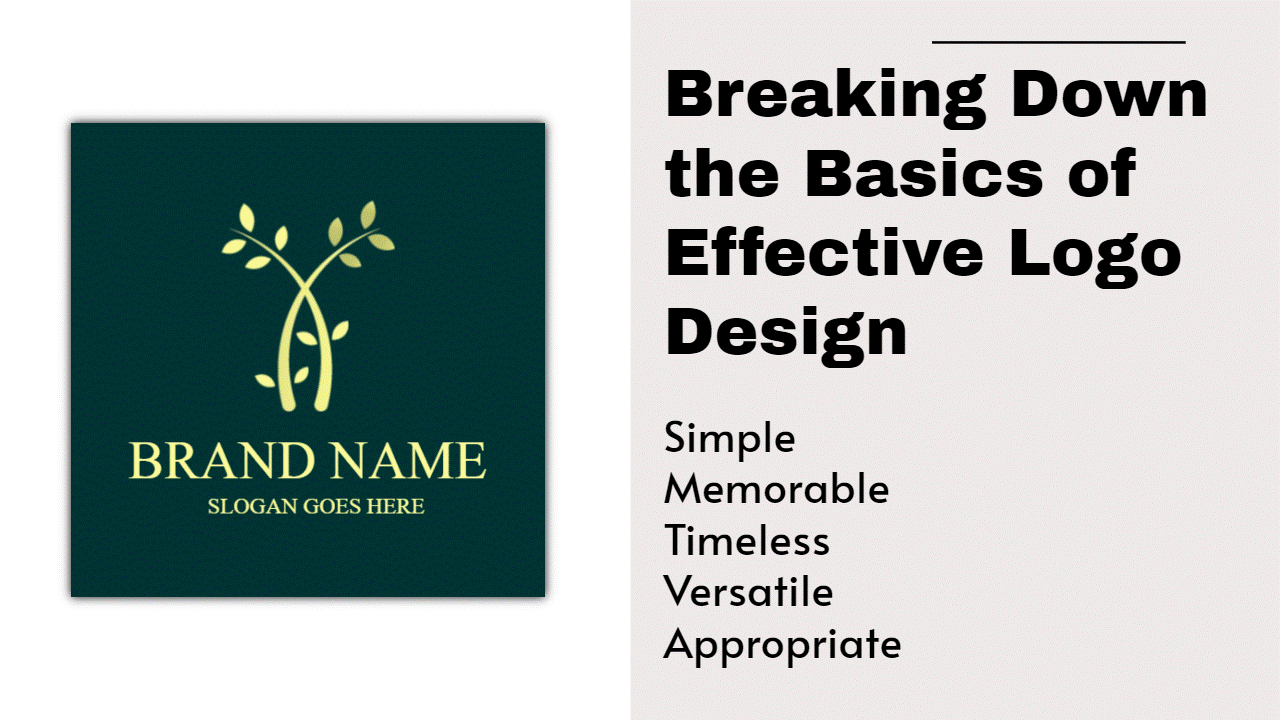In today’s dynamic business landscape, where first impressions matter significantly, the design of a logo is a pivotal aspect of a brand’s success. A well-crafted logo is not just a visual symbol; it’s a representation of a brand’s identity and values. In this comprehensive guide, we’ll delve into the basics of effective logo design, exploring how each element contributes to creating a lasting and positive brand image.
Understanding Brand Identity
At the heart of every successful logo lies a deep understanding of brand identity. The brand identity encompasses the values, personality, and mission of a business. Logos serve as the visual embodiment of these aspects, providing a quick and memorable way for consumers to connect with a brand.
Key Elements of a Logo
Typography
The choice of fonts in a logo is more than just a stylistic decision. Typography sets the tone for a brand, conveying its personality. Whether it’s a bold and modern font or a more classic script, each choice influences how the brand is perceived.
Color Palette
Colors have the power to evoke emotions and shape perceptions. Understanding color psychology is crucial when selecting a palette for a logo. Each color carries specific connotations, and a well-chosen combination can enhance the overall impact of the logo.
Iconography
Icons or symbols within a logo add a visual layer of meaning. Whether abstract or representing a tangible object, the iconography should align with the brand’s message and resonate with its target audience.
Simplicity in Design
The mantra of “less is more” holds true in logo design. Simple logos are not only more memorable but also versatile. A clutter-free design ensures that the logo remains effective in various sizes and across different platforms.
Versatility of Logos
A truly effective logo should be adaptable to different contexts. Whether it’s being displayed on a massive billboard or a small business card, the logo should maintain its integrity and impact. Scalability is a key factor in ensuring the logo’s versatility.
Memorability Factor
Creating a logo that lingers in the minds of consumers is an art. A memorable logo fosters brand recall, helping consumers connect with a brand even amidst a sea of competitors. It’s crucial to steer clear of generic designs and strive for a unique and unforgettable mark.
Relevance to Business
A logo must speak the language of the industry it represents. Understanding the business’s core values and target market is essential. A well-designed logo not only aligns with the industry aesthetic but also reflects the unique identity of the company.
Adaptation to Modern Trends
While timeless design principles form the foundation of a great logo, staying abreast of modern design trends is equally important. A logo that balances timelessness with contemporary elements remains relevant and appealing to current audiences.
Logo Design Process
Crafting a logo involves a systematic process that begins with in-depth research and brainstorming. The initial stages include understanding the brand, its values, and the target audience. Sketching and conceptualizing follow, with iterative design and feedback loops refining the logo to perfection.
Testing and Refinement
Before finalizing a logo, it’s crucial to test it with the target audience. Gathering feedback provides valuable insights into how the logo is perceived. This iterative process of testing and refinement ensures that the final design resonates positively with consumers.
Color Psychology in Logo Design
Understanding the psychological impact of colors is a critical aspect of logo design. Different colors evoke different emotions and responses. Careful consideration of the color palette ensures that the logo communicates the intended message effectively.
Typography Matters
The choice of fonts may seem like a small detail, but it significantly contributes to the overall impact of a logo. Fonts should be selected based on readability, relevance to the brand, and the emotions they convey.
Logo File Formats
Ensuring a logo is available in various file formats is often overlooked but crucial for its practical use. Different platforms and mediums require specific file types, and having these readily available ensures consistency and professionalism.
Legal Considerations
Before finalizing a logo, legal aspects must be considered. Trademarking the logo protects it from unauthorized use, and designers should avoid elements that may infringe on existing copyrights. This step is vital in safeguarding the uniqueness of the logo.
Measuring Logo Success
The success of a logo extends beyond its initial unveiling. Regularly monitoring brand recognition and consumer perception provides valuable insights. Gathering feedback and making necessary adjustments ensure the logo remains effective and aligned with the evolving needs of the business.
Now that we’ve explored the basics of effective logo design, let’s jump to the conclusion.
Conclusion
In conclusion, we’ve learned the basics of effective logo design and it is a meticulous process that requires a deep understanding of brand identity, a keen eye for design principles, and a commitment to adaptability. A well-crafted logo is not just a visual mark; it’s a representation of a brand’s essence. By paying attention to the key elements discussed in this guide, businesses can ensure that their logos become enduring symbols that leave a lasting impression on their audience.
FAQs
How important is simplicity in logo design?
Simplicity is crucial as it enhances memorability and versatility, ensuring the logo remains effective across various platforms.
Why is color psychology important in logo design?
Colors evoke emotions and perceptions, influencing how a brand is perceived. Understanding color psychology helps in crafting a logo that aligns with the brand’s messaging.
What legal considerations should be taken when designing a logo?
Trademarking the logo is essential to protect it from unauthorized use, and designers should avoid elements that may infringe on existing copyrights.
How can a business measure the success of its logo over time?
Tracking brand recognition and consumer perception, gathering feedback, and making necessary adjustments are key to measuring the success of a logo.
Is it necessary to adapt to modern design trends in logo design?
While maintaining timeless principles, adapting to modern design trends ensures the logo remains contemporary and appealing to current audiences.



